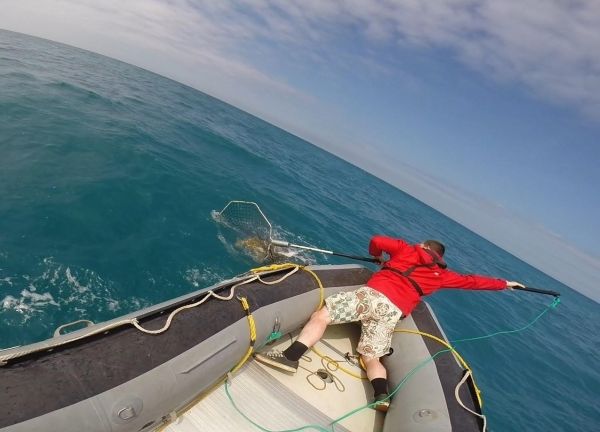In early June 2011, NOAA Fisheries researchers and colleagues placed satellite tags on 26 loggerhead sea turtles in the Mid-Atlantic Bight. The tagging was part of ongoing studies of loggerhead movements and behavior. The Mid-Atlantic Bight, off the U.S. East Coast, is the coastal region from Cape Hatteras, North Carolina to southern Massachusetts. A little more than 2 months later, on August 28, Hurricane Irene passed through the area, putting 18 of the tagged turtles in its direct path. The researchers were able to track changes in the turtles’ behavior coinciding with the hurricane, and found that they reacted in various ways.
“Hurricanes are some of the most intense weather events loggerheads in the mid-Atlantic experience, and we thought it was worth investigating how turtles in our dataset may be influenced by these dramatic environmental changes,” said Leah Crowe, a contract field biologist at the NOAA Northeast Fisheries Science Center’s laboratory in Woods Hole, Massachusetts, and lead author of the study published recently in Movement Ecology. “It was a perfect storm situation in terms of location, timing, and oceanographic conditions. We found that the turtles responded to the changes in their habitat in different ways.”
Read more at NOAA Northeast Fisheries Science Center
Photo: A loggerhead is captured in a net from a small boat during May 2017 field work. Biological samples are collected, and the turtles are weighed, measured, and tagged before they are released back to the sea. CREDIT: NOAA Fisheries


